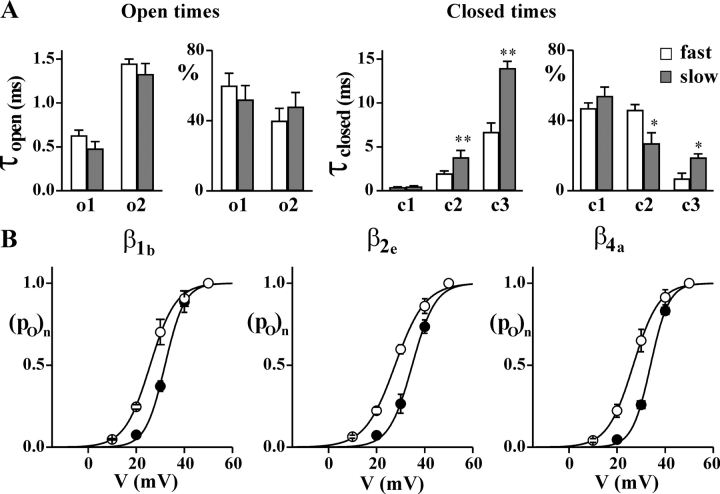Figure 2.
A single human CaV2.1 channel in the slow gating mode spends longer intervals of time in closed states and activates at more positive voltages than in the fast gating mode. Single channel recordings as in Fig. 1 on HEK293 cells stably coexpressing human CaV2.1α1 (α1A-2), α2bδ-1, and β1b, β2e, or β4a subunits. (A) Time constants (τopen and τclosed) and relative areas (%) of the exponential components best fitting the open and closed time distributions at +30 mV of single CaV2.1 channels (α1A-2–β1b–α2bδ-1) in the slow (dark bar) and the fast (empty bar) gating mode. Average values were obtained from single channel patches (n = 5 for both the slow and fast mode) in which, by visual inspection, the channel showed only (or mainly) one gating mode or two clearly separated periods in the two modes. Average single channel current and conductance were identical for the five channels in either the slow or fast gating mode. Statistical significance of difference between paired values using student t test: *, P < 0.05; **, P < 0.001. (B) Normalized open probability, po, as a function of voltage of single CaV2.1 channels containing different β subunits gating in the fast (empty symbol) and the slow mode (dark symbol). Average values were obtained from single channel patches in which the channel showed only (or mainly) one gating mode or two clearly separated periods in the two modes: n = 5, 5, and 6 for the slow mode and n = 5, 4, and 4 for the fast mode of channels containing the β1b, β2e, and β4a subunits, respectively.

